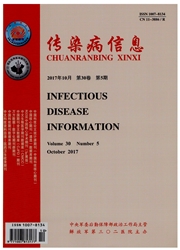

 中文摘要:
中文摘要:
目的:评估孕妇在妊娠中晚期应用替比夫定(LdT)和拉米夫定(LAM)阻断HBV母婴传播的临床疗效及安全性。方法检索经LdT和LAM治疗后阻断HBV母婴传播的临床文献,并应用RevMan 5.2软件对HBV感染孕妇血清HBV DNA水平以及婴儿血清中HBsAg和HBV DNA阳性率进行合并性分析。结果共纳入11篇文献,其中LdT组926例,LAM组425例,对照组1056例。孕妇分娩前,LdT组和LAM组HBV DNA水平明显低于对照组,差异均有统计学意义[LdT组vs对照组:SMD=-4.22,95%CI(-4.39,-4.05),P<0.05;LAM组vs对照组:MD=-4.18,95%CI(-4.52,-3.85),P<0.05]。进一步分析发现LdT组HBV DNA下降更加明显,且病毒学应答高[LdT组vs LAM组:SMD=-0.61,95% CI(-0.77,-0.46),P<0.00001;RR=1.58,95%CI(1.19,2.08),P<0.001]。随访6~12月龄婴儿,LdT组和LAM组婴儿血清中HBsAg和HBV DNA阳性率显著低于对照组[LdT组vs对照组:RR=0.05,95%CI(0.02,0.14),P<0.00001;RR=0.04,95%CI(0.01,0.14),P<0.00001。 LAM组vs对照组:RR=0.21,95%CI(0.11,0.40),P<0.00001;RR=0.22,95%CI(0.11,0.43),P<0.0001]。进一步分析,LdT组在阻断HBV母婴传播的效应中与LAM组差异无统计学意义[LdT组vs LAM组:RR=0.36,95%CI(0.04,3.32),P=0.36]。结论妊娠中晚期孕妇经LdT或LAM抗病毒治疗后,血清中HBV DNA水平均下降,LdT组HBV DNA水平下降更加明显,且LdT和LAM阻断HBV母婴传播的效应无明显差异。
 英文摘要:
英文摘要:
Objectives To evaluate the clinical efficacy and safety of telbivudine (LdT) and lamivudine (LAM) treatment in in-terrupting mother-to-child transmission of HBV in the middle and late pregnancy. Methods Clinical literatures about the interruption of mother-to-child transmission of HBV after LdT or LAM treatment were retrieved. A meta-analysis was conducted by integrating the serum HBV DNA level of the HBV-infected mothers and serum HBsAg and HBV DNA positive rates of the infants with the RevMan 5.2 software. Results Eleven literatures were included for the meta-analysis with 926 cases in LdT group, 425 cases in LAM group and 1056 controls in the control group, respectively. Before delivery, HBV DNA levels of LdT group and LAM group were both lower than those of the control group , and the differences between them were significant [ LdT group vs control group: SMD=-4 . 22 , 95% CI (-4 . 39,-4.05), P〈0.05;LAM group vs control group:MD=-4.18, 95%CI (-4.52,-3.85), P〈0.05]. Compared with LAM group, HBV DNA level of LdT group decreased more greatly, and the virological response rate was higher [LdT group vs LAM group: SMD=-0.61, 95%CII (-0.77,-0.46), P〈0.00001;RR=1.58, 95%CI (1.19,2.08), P〈0.001]. After 6-12 months of follow-up after delivery, serum HBsAg and HBV DNA positive rates of the infants of LdT group and LAM group were significantly lower than those of the control group [LdT group vs the control group:RR=0.05, 95%CI (0.02, 0.14), P〈0.000 01;RR=0.04, 95%CI (0.01, 0.14), P〈0.000 01. LAM group vs the control group:RR=0.21, 95%CI (0.11, 0.40), P〈0.000 01;RR=0.22, 95%CI (0.11, 0.43), P〈0.000 1]. LdT group and LAM group showed no significant difference in blocking mother-to-child transmission of HBV [LdT group vs LAM group:RR=0.36, 95%CI (0.04, 3.32), P=0.360]. Conclusions Pregnant women receiving LdT treatment or LAM treatment during the middle and late pregnancy have decreased level of serum HBV DNA, but the level of those receiving LdT treatm
 同期刊论文项目
同期刊论文项目
 同项目期刊论文
同项目期刊论文
 Factors influencing inadequate or suboptimal response to adefovir with or without genotypic resistan
Factors influencing inadequate or suboptimal response to adefovir with or without genotypic resistan 期刊信息
期刊信息
